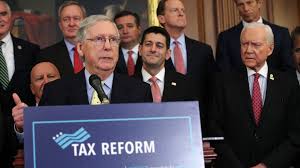President Trump Claimed Business Enthusiasm Is at its ‘Highest Level in Decades.’ Is It?

Just ahead of Friday’s jobs report, U.S. stock markets surged to yet another set of all-time highs, with the value of all S&P 500 companies standing above $ 22.6 trillion by early Thursday.
Amid strong economic figures and renewed hope of tax reform from Washington, the three major U.S. stock indicators jumped to new highs. The S&P 500 rose 0.43% to 2,548; the Nasdaq jumped 0.44% to 6,563; and the Dow industrial average rose 0.37% to 22,746.
President Donald Trump didn’t miss the chance to tweet about this sign of continued optimism from investors. “Stock Market hits an ALL-TIME high!,” Trump tweeted. “Unemployment lowest in 16 years. Business and manufacturing enthusiasm at highest level in decades.”
Stock Market hits an ALL-TIME high! Unemployment lowest in 16 years! Business and manufacturing enthusiasm at highest level in decades!
Since Trump was elected in November, business optimism and the stock markets have soared. His promises of lower corporate taxes along with a Republican-controlled Congress leaning toward fewer regulations sparked hopes of higher profits for businesses.
But is business enthusiasm at its highest level in decades, as Trump claimed?
While business leaders are certainly more optimistic about Republicans’ preference for deregulation, most indicators don’t point to the highest level of enthusiasm “in decades.” Instead, numbers are generally at their highest point since the recession of 2008-09.
A Q3 survey from the National Association of Manufacturers found optimism at its highest point since the survey’s inception 20 years ago. Roughly 90% of manufacturers surveyed said they had a positive outlook on their company.
The Purchasing Managers Index, a bellwether for manufacturing optimism tracked by the Institute for Supply Management, rose to 60.8 in September. That’s its highest point since 2004, a 13-year high.
Another measure of business enthusiasm, the NFIB Small Business Optimism Index, reached its highest point since 2006 in August: 105.3. That’s down slightly from 105.9 in January—or an 11-year high.
Still, some business owners have turned sour after Congress has repeatedly failed to achieve major legislative goals this year.
“It is unlikely that progress in Washington D.C. is the source of continued owner optimism because there isn’t any on the major issues of health care and tax reform,” The National Federation of Independent Business wrote in its August survey. “So owner optimism is more like a ‘relief rally,’ relief that they did not get another four years of costly federal regulations which increased the hold of government on the private sector.”
When it comes to unemployment, Trump’s figures are somewhat outdated. August’s unemployment rate was 4.4%, slightly up from a 16-year low in July of 4.3%, according to the Bureau of Labor Statistics. That figure is expected to hold steady at about 4.4% when September figures come in Friday. Still, unemployment in the U.S. is below its historical post-war average of about 5.8%.
Though Trump may be exaggerating his claims, the data points to a generally strong U.S. economy since he’s taken office. But the extent to which Trump’s 10-month-old administration can take credit for an economic recovery that’s been happening since the financial crisis is less than clear. While his deregulatory stance and promises about lower taxes may certainly boost optimism—showing up in outlook surveys and stock market prices— it’s unclear how the White House has played a role in keeping unemployment low or or boosting the country’s GDP.
“It’s premature,” said Stephen Moore, a visiting fellow at the Project for Economic Growth at The Heritage Foundation, said earlier this year regarding an earlier Trump tweet boasting about jobs growth. “It takes a while for policies to translate into jobs. Stock markets react instantaneously to things. For jobs to come back–that takes longer.”
